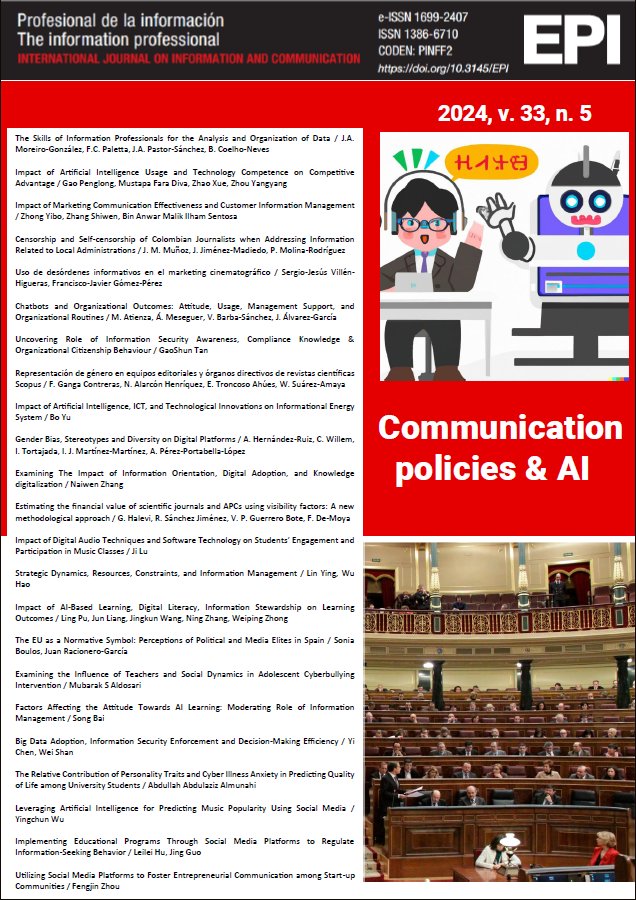Leveraging Artificial Intelligence for Predicting Music Popularity Using Social Media
DOI:
https://doi.org/10.3145/epi.2024.ene.0522Keywords:
Popularity of Music, Social Media, Predictive Model, DHB-ILSTM.Abstract
Music industry has been remarkably influenced by artificial intelligence (AI) due to the ability of the latter to predict song popularity based on social networking sites data, though it is rather difficult to predict the success of a song in any given scenario. This study is based on the premise that improved accuracy in prediction can be achieved by developing adaptive algorithms sensitive to changing trends of data. Therefore, this study proposes a new approach called Dynamic Honey Badger Optimization-Driven Intelligent Long Short-Term Memory (DHB-ILSTM), a model that can enhance music popularity forecasting with social media metrics, incorporating audio features. Features were extracted from audio sources like Spotify and social media metrics, genre-wise on newly released music tracks. During pre-processing, Min-Max normalization technique was utilized, and inputs standardized, while missing values were filled in. Feature extraction and dimensionality reduction used LDA. It was found that DHB-ILSTM algorithm in Python was superior, regarding the model without social media data in comparison, because it yielded an accuracy of 93% for audio features, recall of 90%, and an F1-score of 91% with a precision value of 88%. The findings underscore the versatility of the model in integrating heterogeneous data sources and adapting to dynamic trends, meaning that it is a strong solution to music popularity prediction using AI and advance optimization techniques.
Downloads
Downloads
Published
How to Cite
Issue
Section
License
Copyright (c) 2025 Profesional de la información

This work is licensed under a Creative Commons Attribution 4.0 International License.
Dissemination conditions of the articles once they are published
Authors can freely disseminate their articles on websites, social networks and repositories
However, the following conditions must be respected:
- Only the editorial version should be made public. Please do not publish preprints, postprints or proofs.
- Along with this copy, a specific mention of the publication in which the text has appeared must be included, also adding a clickable link to the URL: http://www.profesionaldelainformacion.com
- Only the final editorial version should be made public. Please do not publish preprints, postprints or proofs.
- Along with that copy, a specific mention of the publication in which the text has appeared must be included, also adding a clickable link to the URL: http://revista.profesionaldelainformacion.com
Profesional de la información journal offers the articles in open access with a Creative Commons BY license.




